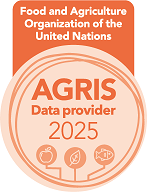Enfermedad respiratoria multicausal y perfiles de coinfección en América Latina (2° semestre 2023)
Brasil, Colombia y Perú como ejemplos
Palabras clave:
Biología molecular, Enfermedades respiratorias agudas, CoinfeccionesResumen
Respiratory infectious diseases are responsible for major economic losses and health problems in commercial poultry worldwide. Under field conditions and with the co-circulation of multiple pathogens, the respiratory infectious diseases are increasingly thought to be multi-causal as they may result from the co-infection with multiple pathogens. Experimental studies have shown that co-infections may exacerbate the clinical outcomes compared with single infections. On the other hand, the diagnosis of co-infections is very difficult to establish on the basis of clinical evidence, which makes molecular testing indispensable. Several surveys conducted in Africa and the middle east showed that respiratory co-infections with viral pathogens are frequent in broilers. To the authors’ best knowledge, there is no publications on this topic from South America. The aim of this study was to investigate the multi-causal origin of respiratory infectious diseases in broilers and layers during acute respiratory outbreaks in Brazil, Colombia, Mexico and Peru. Tracheal swabs were collected from commercial broilers and layers flocks in Brazil, Colombia, Mexico and Peru within the first five days of an acute respiratory disease outbreak. Swabs were smeared into FTA® cards and shipped to the virology department of Toulouse veterinary school in France together with the flocks’s metadata. (CC1) Samples were tested for a panel of viral and bacterial respiratory pathogens using commercial ID.Vet qPCR kits (Innovative Diagnostics, Montpellier, France). The four targeted viruses were infectious bronchitis virus (IBV), Newcastle disease virus (NDV), avian metapneumovirus A and B (aMPV), infectious laryngotracheitis virus (ILTV) using respectively ID Gene™ Infectious Bronchitis Duplex kit, ID Gene™ Newcastle Disease Duplex kit, ID Gene™ Avian Metapneumovirus A and B Triplex kit, and ID Gene™ ILT Duplex kit. The three targeted bacteria were Mycoplasma gallisepticum (MG), Mycoplasma synoviae (MS) and for Ornithobacterium rhinotracheale (ORT) using respectively ID Gene™ MG/MS Triplex kit and a SYBR Green qPCR assay (Croville et al., 2018). Samples positive for IBV or NDV were genotyped. Specific PCR assays were performed to amplify partial S1 and F gene of IBV and NDV, respectively and then Sanger sequenced. Samples from 50, 24, 14 and 9 flocks were collected from Colombia, Brazil, Peru and Mexico respectively. Among the 97 sampled flocks 59, 31 and 7 were broilers, layers and broiler breeders respectively. IBV was the most detected pathogen in all four (CC2) countries as 36, 22, 6 and 8 of the flocks were positive for IBV, respectively in Colombia, Brazil, Peru and Mexico. 48/50 and 6/7 flocks from broilers and broiler breeders were positive for IBV whereas only 9/31 flocks were positive in layers. In Colombia, 36/50 flocks showed co-infections either with IBV+NDV genotype I or II (10/50), IBV+ILTV (5/50) (CC3) or IBV+aMPV-B (3/50). Bacterial pathogens were found in co-infection with viral pathogens in 20 flocks. In Brazil, only 4/24 flocks were co-infected either with IBV+aMPV-B, IBV+NDV genotype I, IBV+MG or MG+MS. In Peru, co-infections were recorded in 6/14 flocks and were either with IBV+aMPV-B, IBV+NDV, IBV+MG, IBV+MS (2/14) and MS+ORT. In Mexico, 5/9 flocks were co-infected either with IBV+aMPV-A (3/9) and IBV+MS (2/9). This study showed the high contribution of IBV to the acute respiratory disease in broilers and broiler breeders in Colombia, Brazil, Peru and Mexico between 2023 and 2024 so we need to mitigate the risk of IBV since it is consistently detected in co-infections. The results of this study demonstrated that the respiratory co-infections are more frequent in Colombia Peru and Mexico than in Brazil. This study confirms that we need to broaden the spectrum of diagnostic investigations in the lab and to multiplex the qPCR assays to reduce costs for regular use. This study confirms that it is crucial to screen multiple respiratory pathogens to understand better the origin of the respiratory infectious diseases and to implement the right measures to tackle them.
Descargas
Publicado
Cómo citar
Número
Sección
Licencia
Derechos de autor 2025 Sociedad de Medicina Veterinaria del Uruguay-Facultad de Veterinaria, Universidad de la República

Esta obra está bajo una licencia internacional Creative Commons Atribución 4.0.











